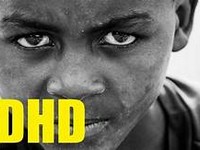
ADHD
FOODS THAT HARM
FOODS THAT HEAL
FOODS TO LIMIT
WHO’S AFFECTED
4 million children ages 4 to 17 were diagnosed with ADHD—that’s nearly one in 10 children
And a growing number of adults are also being diagnosed
Symptoms must have lasted at least 6 months in at least two different settings, such as home and school
Symptoms might include: making careless mistakes; being easily distracted and forgetful; talking excessively; interrupting others; and fidgeting
WHAT ABOUT CAFFEINET
The jury is still out as to whether caffeine improves or worsens ADHD symptomsBecause it’s a stimulant, it makes sense to think caffeine might help ADHD symptoms, just as stimulant drugs can
Researchers support this theory and say that caffeine can lessen impulsiveness and hyperactivity
But if children drink caffeine late enough in the day so that it affects their sleep, it could worsen symptoms
At least one study suggests that women who drink caffeinated soft drinks during pregnancy are more likely to have children who, at 18 months old, have ADHD symptoms (interestingly, coffee didn’t have the same effects)
Nutrition Connection
In a 2012 paper in Pediatrics, researchers at Children’s Memorial Hospital in Chicago studied the diet factor in ADHDThey concluded that some children with ADHD do respond to strict elimination diets such as the Feingold diet, which removes many foods with salicylates from the diet
But these diets are time-consuming and disruptive to the entire family—and they’re hard to implement, especially as kids get older
For most kids, simply avoiding junk food and processed foods is enough to ease ADHD symptoms; instead, focus on a diet rich in whole grains, plenty of fruits and vegetables, and lean proteins, especially fish
Here’s how: Nix simple carbs
Candy and fruit drinks, soft drinks, and foods sweetened with corn syrup, honey, and sugar can raise blood sugar levels and may contribute to attention problems
Eat complex carbs
Especially later in the day, offering kids a complex carb–rich snack can promote relaxation and sleep
Good choices include whole-grain breads and cereals
Focus on protein
Choose foods like beans, eggs, low-fat cheese, fish, and lean meat for breakfast and for after-school snacks
Protein foods may improve concentration
Avoid foods that contain salicylates
Some children with ADHD may be sensitive to salicylates, chemicals that occur naturally in many fruits and vegetables (especially dried fruits) as well as in processed foods, foods containing dyes, and many medications and household products
If you think certain foods affect your child’s behavior, eliminate them over time to see if symptoms approve
Beyond the Diet
Your doctor will likely suggest behavioral strategies to help your child manage his or her attention problemsBeyond following that advice, try these tactics
Stick to a medication schedule
If your doctor prescribes medication for your child, makes sure it is taken as directed and at the same time every day
Limit TV and electronic games at night
These can overstimulate children before bed and make it harder for them to get the 7 to 8 hours of sleep they need
Play, preferably outdoors
Encourage your kids to be active for at least 20 to 30 minutes most days of the week
Do some deep breathing
Teach your kids to stop what they’re doing and take slow deep breaths for a few minutes, whenever they feel angry or stressed
Importance of well balance diet




